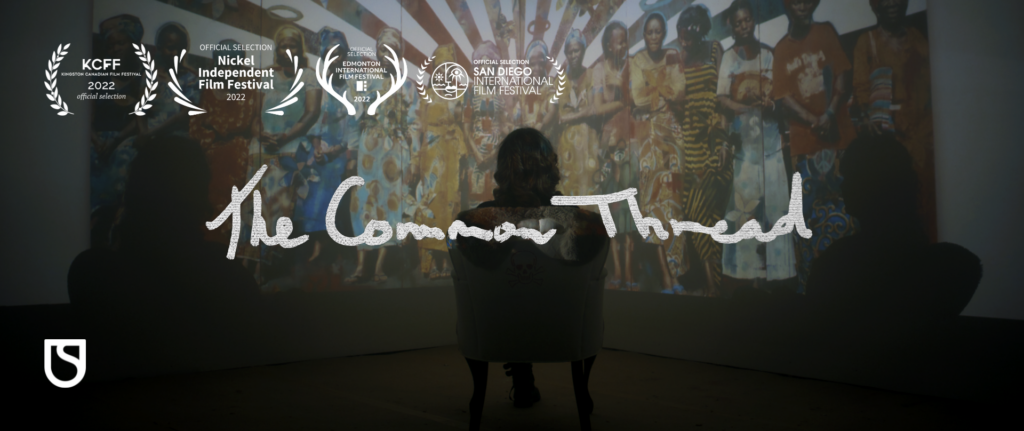
Late last year, I had the opportunity to speak with Braden Dragomir of Untold Storytelling about his new documentary short “The Common Thread.” The film follows artist Heather Haynes as she grapples with finding new meaning in her work, and her struggle to understand why much of Western society ignores the violence in other parts of the world. The film, released on March 8, 2023, coincides with a month-long exhibition of Heather’ work at Wolfe Island Hotel in Ontario. You can view the film on Vimeo here. I spoke with Braden about his journey as a storyteller and filmmaker, and how he was able to bring Heather’s story to life.
Marina: Could you start by telling me about how you got into filmmaking and storytelling in general?
Braden: I’ve been doing this for a long time. I remember the first video projects I made. I did French Immersion, and we had this quirky French teacher. She would always give us three options for our assignments: you could write an essay, you could do a presentation, or you could make a video. And I don’t know why she ever thought it was a good idea to let people in grade six and seven make a video as their report, but she did. We made some of the worst recreation videos of battles in French history you could imagine, all shot on my dad’s VHS camera. But it made me realize that I found the film industry really fascinating.
I grew up on a little island off the coast of British Columbia called Salt Spring Island. We had this really amazing career counselor who could get you a placement on any job in the province. She had this just insane ability to put people wherever they wanted to go. I told her “I kind of think I might want to work in movies.” In Grade 10 she got me on the set of Smallville, which was in its first season shooting in Vancouver. In Grade 11, she got me on the set of Dead Like Me. And then in Grade 12 she got me on the set of X-Men 2. I’d do school during the year, but then in June, July, and August I would get to spend my summer on set. They were either minimum wage or unpaid placements, but they were a great opportunity to step into the film world.
I ended up moving down to the States to get a four-and-a-half-year degree in Communication Arts. My background was in film, which sort of gave me this hybrid set of skills to make a good video journalist. So I pursued that. I worked at a CBS affiliate, then a NBC affiliate.
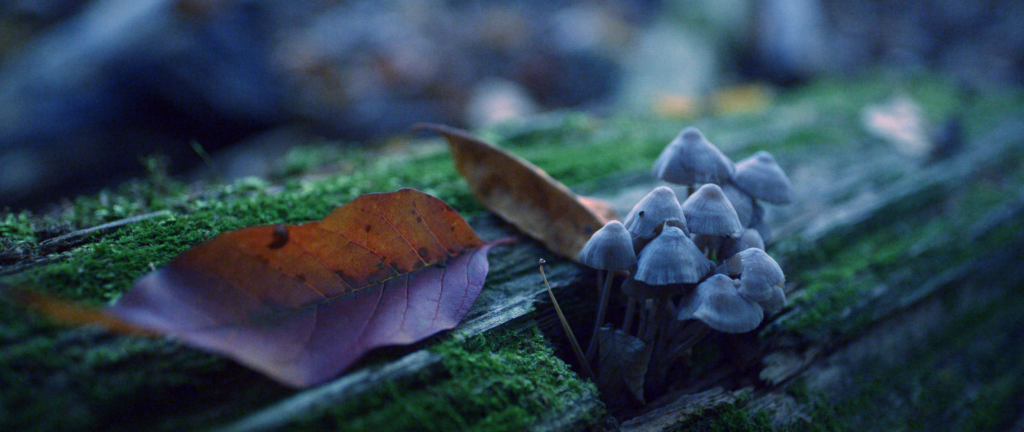
And then when my work visa came up and the recession was starting, they didn’t want Canadians taking American jobs. So I ended up moving up to Toronto. I spent a few years in Toronto freelancing, you know, sort of trying to get back into the news industry. I ended up getting a fulltime job out here in Kingston, Ontario, at what was then a CBC affiliate. So I worked here for a couple of years, staying in journalism, and then I got super burnt out on news in 2012. It became a lot of chasing stories that I wasn’t interested in.
I left my job without a real plan, but within a couple of weeks, I had probably half a dozen people reach out for video work. So I started figuring out how to build a production company. Now we’re eight years into this journey and I think the last couple of years I really found a great hybrid between my ability to talk to people from my journalism career and the ability to create really great documentary style work. I’ve been able to find a balance between these two things I really love. I love digital storytelling and bringing stories to life in a way that hopefully inspires people or engages them or moves them in some way.
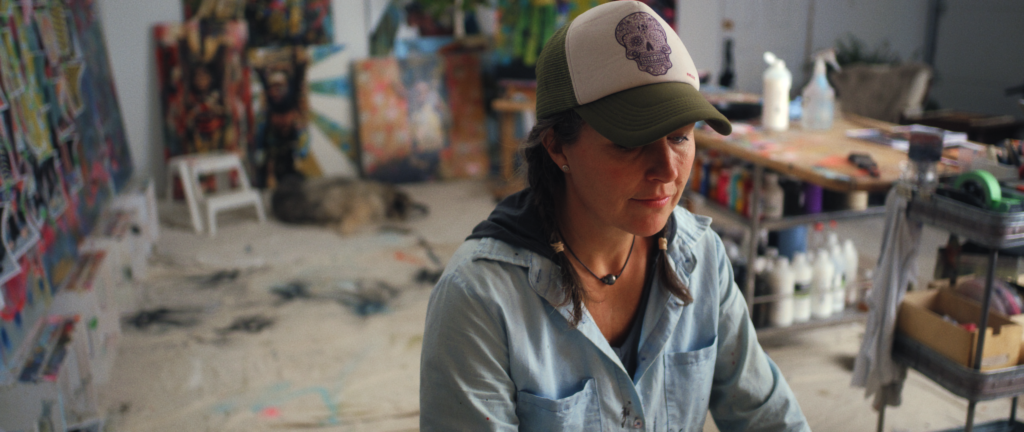
Marina: Do you think you could talk about how you first learned about Heather and how you decided that this was a story that you wanted to tell?
Braden: Heather is a very well known artist in our community. We touch on it a bit in the documentary, but for a long time she was known for the trees she painted and these beautiful Canadian landscapes. She was doing really beautiful work. Early on in my time in Kingston, she had a gallery downtown.
We had this sort of funny, serendipitous meeting a few years ago, while we were making a branded content series of maker films for tours in Kingston. We did several of these 90-second to two-minute profiles of artists and makers in the community. And one of those was Whitney Haines, a jeweler and a silversmith. When we had finished shooting, she was like, “you should meet my sister. I’ve always thought my sister should think about doing something like this. You should really meet her.” And then probably two years went by before the three of us went for coffee.
And we had a coffee downtown, you know, out on the patio during COVID. We just got to talking, and her story was fascinating. I knew her art and I had seen her work, and I had heard about the Wall of Courage. But when you hear it from her, you realize, oh, she just cares more about these kids than anything. And it’s really infectious. It was really, really fascinating to get to know her. It got us thinking, “Is this a story that we can bring to life?” Her art is hard to show on camera. These paintings are massive, and we wanted to do them justice in a way that would also engage an audience. It was where the idea of the projectors came from. We had no way to show The Wall because it was in storage in L.A. And so we wanted to try to figure out a way to bring that to life visually.
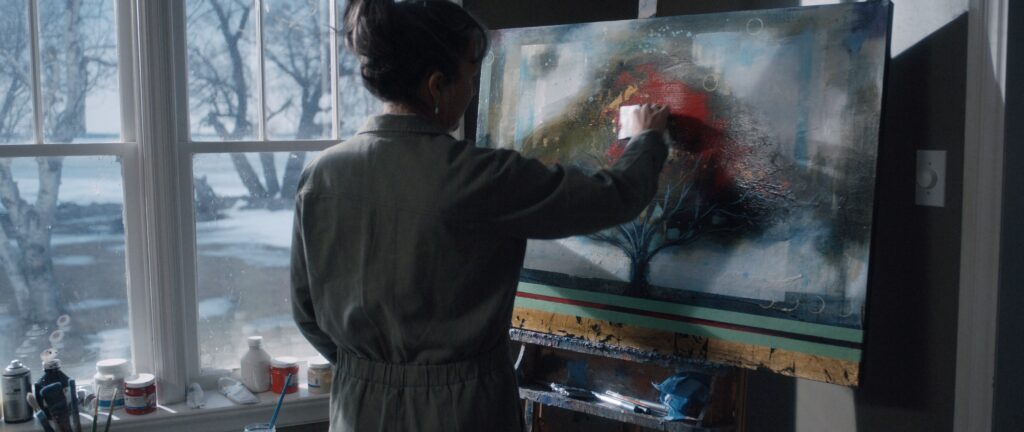
Marina Yeah. It was very compelling, the combination of her storytelling and seeing the closeup shots of how it actually came together in these small areas. It’s almost more intimate that way, because you understand how all these pieces have to come together to create this massive work.
Braden: Especially when it starts with the blank canvas. Her process is really raw and emotional. It’s not methodical. It’s not planned out. She starts literally with the blank canvas and then just throws all of her emotions at it. And that’s it kind of comes out in whatever medium and material. You know, she’s got painting, stencils and spray paint, and it’s just whatever she’s feeling. Her pieces are really raw, and a lot of her work she’ll cover over. At the end of the film, we show a series of these pieces and how her art evolves. And what’s really interesting is, under a couple of those canvases are old tree paintings.
Marina: Wow.
Braden: Yeah. You never know as an audience that there’s a whole other painting that probably took weeks to paint underneath another painting. So we really wanted to try to figure out how to show that as well. How can we document this process over a long period of time?
Marina: Could you talk a little bit about how your experience in journalism helped you with conducting this interview with her?
Braden: I’ve been fortunate to work with some really great directors over the years. The skill that I always had was interviewing people. Talking to people and getting people to talk and, you know, leaving space for people to answer and to go deeper. I don’t think I ever wrote down questions. I really want to have true and honest conversations. I like to learn the details of the story before we do the interview. I don’t like to call it a pre-interview because I don’t know if that’s necessarily reflective of what we do.
For Heather’s piece, I intentionally filmed all of the making of the painting before we did the interview. So we had seven days, in her studio, spending time together, eating lunch and working. Those were 6 to 10 hour days. We didn’t talk the whole time. We talked when she wanted to talk, because she does work in silence quite a bit as well. By the time we got to the place where we were getting ready to do the interview, we had a really good idea of what the story was and how we wanted to tell it. That interview was, I think it was a little over 3 hours. A lot of that was just giving her time and space to think. Pushing when it’s appropriate to push, and not pushing when it’s not.
It’s a combination of having a really refined process for how we conduct interviews and then how we talk to people.
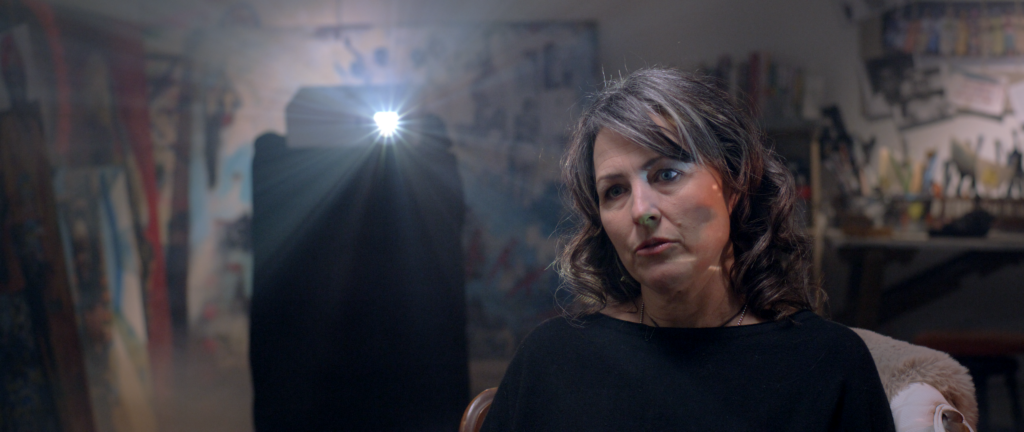
Marina: I was really struck by her ability to clearly and concisely speak from the heart on some very emotionally complex topics. Do you think that comes from her strength as an artist, or is it the process of asking the questions, like how you approached it?
Braden: I think she is a very reflective person and the experiences she’s had dramatically affected her. Like they, they really did change the course of her life. I think she’s had a lot of time to think about that. You know, she’s got a wonderful husband and they talk all the time. Early on, you know, she made her living painting trees. As an artist, that’s the dream, right? But at the same time, she wasn’t really happy doing that work. Together they decided, okay this is what you care about, let’s go all in on this. And so I think because of that, she’s obviously had a lot of time to sort of spend time in that mental space and ask herself, “why is this something that is so important to me?”
I do think the other part of that is as the interviewer, and giving someone the space to think during an interview. Early on in my career, I had a tendency to fill silence with words. Waiting for someone to answer can be awkward and uncomfortable. And until you’re okay sitting in silence and letting someone just process, I think a big part of it is just giving people all that time and space and presence. Let them know that you’re with them.
I think the other piece to it is really active listening. It’s the reason I don’t write questions down – if it’s too scripted, then it feels performative. It’s about giving someone your presence and actively listening and using the words that they use, so that when you ask the next question, they know that I’m there with them and I’m really listening.
You know, I will say that this interview was particularly challenging because we created a scenario that was a little tough. We had the projection going the whole time. My editor Taylor and I, we built out all those visuals in advance. Taylor knew the plot points and the places I was hoping the conversation would go. And so he would cue up and change the visuals, based on where I was in the interview. I just had to sort of trust that that was going to work. And I’d say 99% of the time it did.
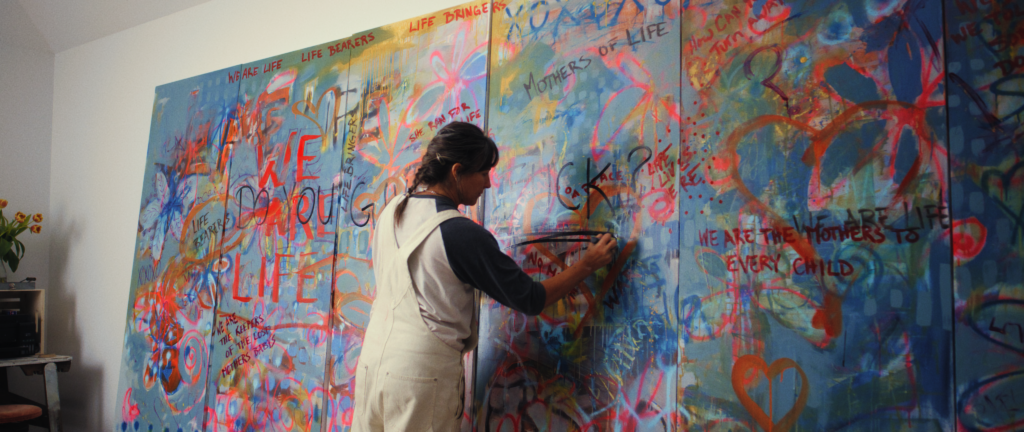
Marina: It felt very honest and transparent. Like you immediately feel like this woman is speaking from the heart. She starts talking about how she’s not connecting with her work, how she’s not finding meaning in it anymore and suddenly you just get carried along with this emotional journey.
Braden: You know, we intentionally didn’t show her any of the visuals beforehand. We combed through 8 hours of footage from her trip to the Democratic Republic of Congo to be able to pull up all these moments. She hadn’t seen it before. That moment where she laughs at her dancing with the women at the beginning – she had no idea. Putting these things on the wall around her during the interview was really immersive for her and psychologically brought her back to DRC. I think that helped her go emotionally deeper, faster, because she was really taken back to that place.
Marina: Wow, I can’t imagine what it would be like to be in that position where you’re telling a story and footage of it is happening all around you.
Braden: Some of the parts were kind of weird too. She hadn’t seen any of the footage of us filming her making that painting, you know? We were using footage we hadn’t even thought about. It was a bit of a crazy idea, but it worked.
Marina: I have to ask about the music. Could you talk a little bit about how you chose the music? Did you know what you wanted going into it or did it come together afterward?
Braden: The music is so important, especially for setting the tone and feeling. We’re really always thinking about music, all the way through a piece. Taylor, my editor, initially went to school for music, so he really brings that great perspective about what music brings to a piece. We try to choose music that doesn’t overcommit our audience to an emotion, if that makes sense. We don’t want to use the music to fake a mood, we want to amplify what’s actually happening in the documentary.
Collaborating with the Marmoset team, I think we had a really good give and take. We realized we wanted something ambient, something with a lot of room. The Marmoset team put together some really, really great options that led us into new places. It was this great little back and forth. And I think we ended in a place where we’re really, really happy with how the music elevates the piece without forcing or driving too much. Music can be so heavy handed, and sometimes that’s great. But in this piece, it really needed to be pretty subtle. I think it achieves that really well.
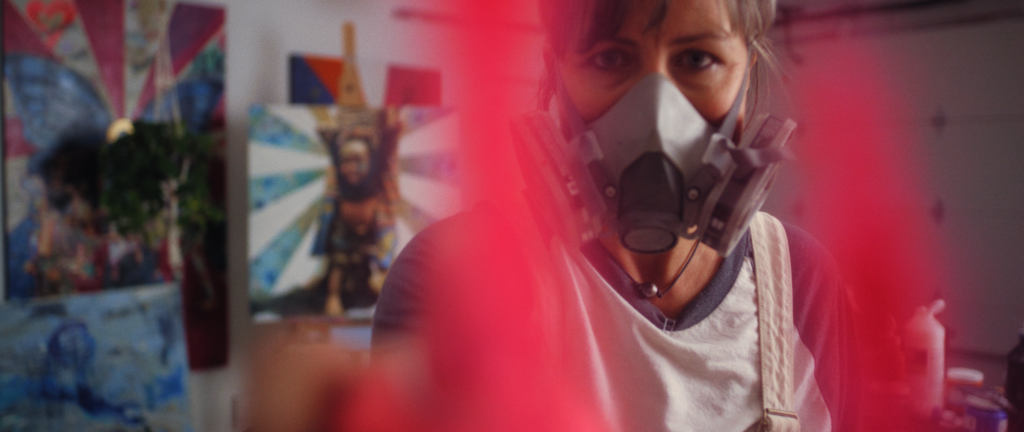
Marina: Could you talk a little bit about what’s next?
Braden: With this project – I love the piece we created, but it only feels like half the story, because we didn’t have an opportunity to go to DRC, where she sends money to a local non-profit. They’ve built some amazing things. They built schools, hospitals. They’ve taken the money they’ve been able to raise and really change lives. And so to me, the missing piece of this is what’s happening in that part of the world. It’s really important to this story that that side of it is told.
It’s a bit beyond what we know. We’ve done a lot of branded content style work. We’ve done a handful of short documentaries, but we’ve never done a feature length documentary. And so there’s a bit of a learning curve. There’s also some safety challenges, so we need to make sure to fund it properly and ensure that we take care of everybody. It’s super important to me to find filmmakers in DRC to be a part of the project. We found a lovely producer in Kenya. We found a few other filmmakers in Africa that want to support the project. And so now it’s about figuring out the funding and how do we actually bring this to life.
Marina: Do you have any advice for aspiring filmmakers who would like to get into documentary storytelling?
Braden: I’m still figuring it out myself, you know? One of the things I learned is to tell stories that you care about. For a project like this, for example, if we didn’t like spending time with Heather or we weren’t really invested in Heather’s work, it would have been really hard to do. Keeping a really open mind and constantly being curious is a really good place to start for any project. Being open to new experiences, being open to new perspectives, being wrong. It’s okay to be wrong. It’s okay to not know what you’re doing. It’s okay to be, you know, figuring things out as long as the things that you’re figuring out you really care about. If you love the process and you love what you do every day, that’s where some sort of magic starts to happen. Things aren’t always easy for us, you know, as individuals and as a company. But, man, I love coming to work every day. I love meeting people. I think if you’re coming at it from a place of joy and positivity, it doesn’t make it easy, but it makes it little bit easier.
